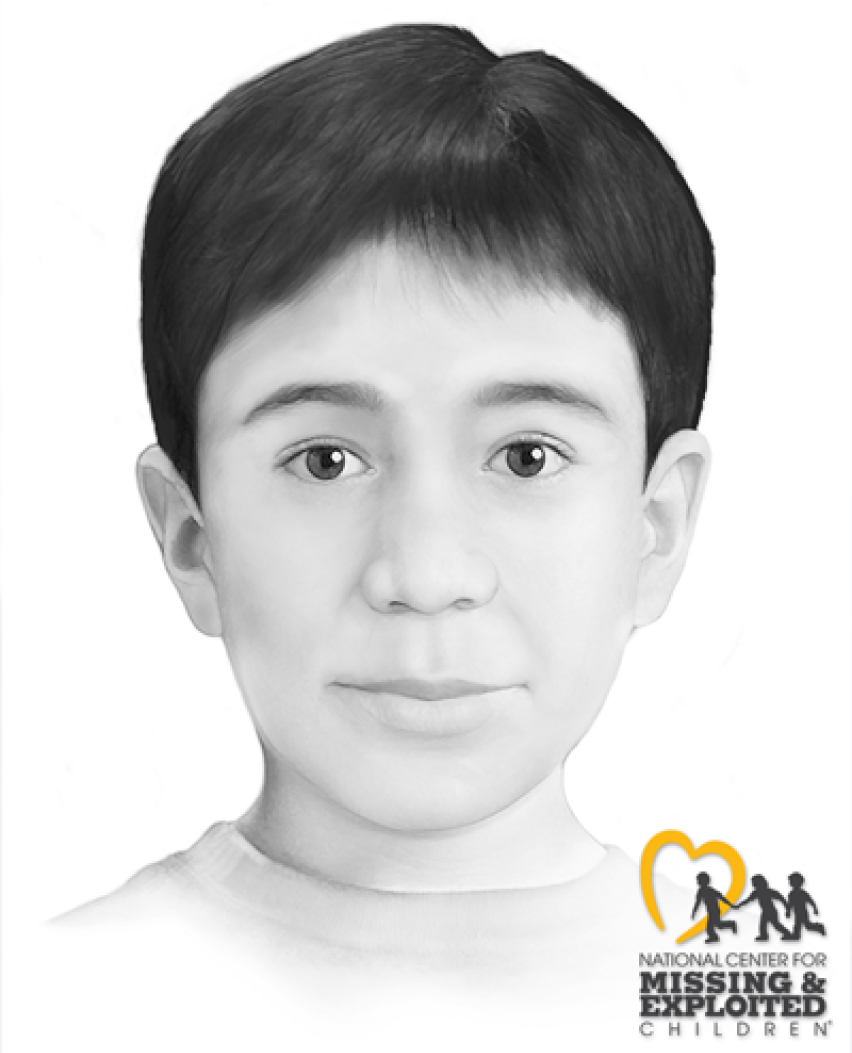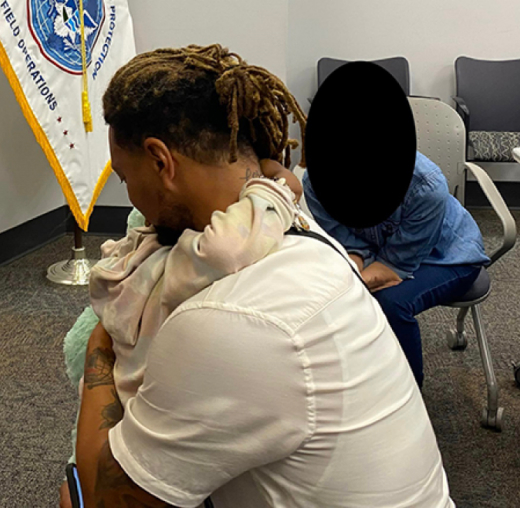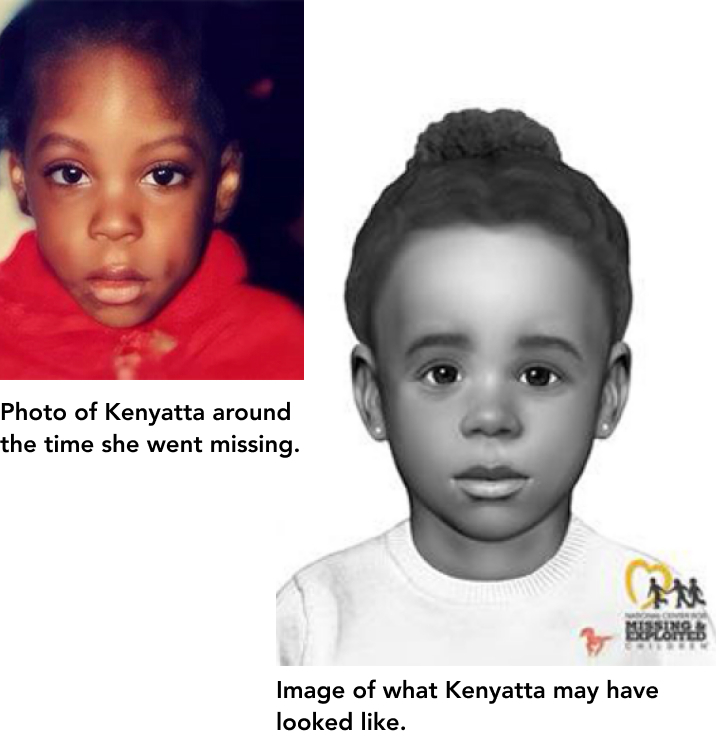OUR IMPACT: 2023
No child should suffer the traumatic realities of going missing or being exploited. While many still do, at the National Center for Missing & Exploited Children (NCMEC) we are committed to recovering and protecting every child while working to prevent future harm. For 40 years, our organization has stood as a beacon of hope, dedicated to safeguarding the security and well-being of society's most vulnerable members: our children. With unwavering commitment and advocacy, NCMEC serves as a guardian, a lifeline and a force for change.
In 2023, NCMEC assisted law enforcement, families and child welfare with 28,886 cases of missing children.
In the last 40 years, we've received more than 5 million calls with more than 426,000 missing children recovered.
In 2023, NCMEC CyberTipline received 36.2 million reports of suspected child sexual exploitation online.
Reports of online enticement increased by more than 300% between 2021 and 2023.
In 2023, NCMEC provided 42,761 instances of training to child-serving professionals to enhance their ability to prevent or respond to cases of missing or exploited children.
In 2023, total social media followers for NCMEC (@NCMEC) grew to more than 3 million users.
At NCMEC, hope drives us and fuels our promise to never stop. The threats facing our kids are constantly evolving, and we work hard every day to identify those threats to better protect children. While the way we do our work continues to evolve, our commitment to children will never falter.

A light hangs in NCMEC's offices next to the words, "Our Light Stays on Until All Missing Children Come Home." The light is a symbol of our commitment to never give up on a missing child and that idea drives our work with families, law enforcement and child welfare professionals to bring missing children home. We provide immediate support to families, share alerts to mobilize a vast network of community support, assist law enforcement on critical cases, work to prevent abduction through education and use advances in technology to help solve long-standing cases. We never give up searching for every child.
Missing children are reported to us by parents, guardians, child welfare professionals or law enforcement. With the exception of children missing from care, there is no mandatory reporting of missing children to NCMEC. Here, we provide the 2023 data on reported cases of missing children shown by case type; by the child's age, race and ethnicity; and state. The number of cases of children reported missing from care is also listed.
Table: Missing Children Reported to NCMEC between 1/1/2023 and 12/31/2023 by Case Type and Case Status
*The data in this section includes all missing cases reported to us, including missing young adults (age 18-20).

Children who run away make up the majority of the missing child cases reported to NCMEC. These children are highly vulnerable and face risks including homelessness, gang involvement and child sex trafficking. Family abductions, the second most common case type, have been shown through decades of research to have serious and harmful effects on child victims and their families.
| Missing State |
Case Studies
Active
Resolved
|
Total | |
|---|---|---|---|
| col | 0 | 0 | 0 |
| Grand Total | 0 | 0 | 0 |
There are many reasons why children run away. Running behavior is often connected to a trauma response or an unmet need in a child's life. For example, a child may run if they are placed in a home or community where their identity, culture or religion is not understood or accepted or where they feel emotionally or physically unsafe. Children may also leave care in an effort to connect with non-custodial family members or friends, out of a desire to take back control of their lives or as a result of being lured by traffickers or gangs who falsely promise safety, family, love and belonging.
of the children who ran from the care of child welfare and were reported missing to NCMEC in 2023 were likely victims of child sex trafficking.
During the last 40 years, our national toll-free hotline, 1-800-THE-LOST®, has received more than 5 million calls. We've circulated billions of photos of missing children. We've assisted law enforcement, families and child welfare with more than 426,000 cases of missing children who have been recovered. We continue to look for opportunities to innovate how we search for missing children.
In 2023, for example, NCMEC debuted its newest way to search for missing children: through a QR code. The QR code allows people to search for missing children within a 50-mile radius of their location, right from their smartphones.
NCMEC's call center specialists are trained to help families navigate some of the worst moments of their lives. Our specialists are available 24/7 to support families of missing and exploited children. After a missing child case is reported to NCMEC, a case manager is assigned to serve as the primary point of contact for the parents or guardians. Case managers also work closely with NCMEC analysts who use donated technology and public records to support law enforcement efforts to recovery missing children, identify victims of child sex trafficking and locate noncompliant sex offenders.

Were received by NCMEC's call center.
There was a
in calls received.
NCMEC assisted with
of missing children.
One of the first ways people are introduced to NCMEC is through the AMBER Alert program. AMBER Alerts are activated by law enforcement in the most serious child-abduction cases. We've been asked by the U.S. Department of Justice to oversee the secondary distribution of these alerts using cell phones, social media, billboards and more.


In March 2023, an AMBER Alert was issued for two children who were inside a vehicle that was stolen by a man in Zanesville, Ohio. Shortly after they went missing, police issued the AMBER Alert, along with an Emergency Alert Service (EAS) and a Wireless Emergency Alert (WEA). Within a few hours, a good Samaritan recognized the stolen vehicle and immediately contacted the police. The police set up a traffic stop, which allowed them to stop traffic and locate the children, who were unharmed. Police took the suspect into custody and charged him with kidnapping, theft of a motor vehicle and multiple other charges.
Learn more about the AMBER Alert program and get answers to frequently asked questions here.
Named in honor of Adam Walsh, Team Adam provides rapid, onsite assistance to law enforcement and families during critical cases involving missing children. Team Adam consultants are retired law enforcement professionals with years of experience at the federal, state and local levels.

In 2023, at the request of law enforcement, Team Adam was activated on 57 incidents involving critically missing children and provided assistance to 146 long-term missing children cases. Since inception in 2003, Team Adam consultants have deployed 1,297 times to assist in matters involving 1,490 missing children.
In addition to assisting law enforcement with long-term missing children cases, Team Adam consultants bring specialized knowledge of landfill assessments, biometrics collection and search and rescue, as well as facilitate the application of NCMEC resources.
To help prevent kids from going missing, NCMEC tracks and analyzes attempted child abductions and related incidents.
Analyzing these crimes helps us teach families and children about the greatest risks and provide law enforcement with tools that can help safeguard their communities. To learn more about risk factors and prevention, click here.
In 2023, NCMEC tracked 298 attempted abductions involving 381 children. We've tracked 15,573 incidents involving 19,705 children since we began tracking in 2005.
NCMEC provides forensic services to law enforcement, medical examiners and coroners to assist our efforts to find missing children, identify unknown deceased children and develop leads on child abduction homicides. The Forensic Services Unit works with experts from a wide range of disciplines.
When a child has been missing for more than two years, a photograph may no longer reflect the child's current appearance. NCMEC's specialized artists create age-progression images of missing children so the public has a more accurate representation of what that child may look like now.
Juan Tristan was only seven weeks old when he was abducted from a park in Los Angeles in 1987. He was so young his mother didn't even have a picture of him. In 2023, using photos of Juan's family members as a reference, forensic artists at NCMEC created the first ever image of what Juan might look like now at age 36.

NCMEC's forensic artists age-progressed
137long-term missing children in 2023.
We've age-progressed
7,732
since the team began this work in 1989.


Visit his poster for more information.
This team of artists also creates facial reconstructions for unidentified deceased children. They work closely with NCMEC case managers who are helping law enforcement determine the child's identity.
In 2023, NCMEC's forensic artists created
39 facial reconstructionsfor unidentified deceased children, and they have created 692 to date.
Overall, NCMEC has assisted in 270 identifications of unidentified deceased children.
When the remains of a child are found with few clues as to their identity, it can be very challenging for law enforcement to determine who that child was or who was responsible for their death. But advancements in DNA and genealogy are revolutionizing the search for answers. NCMEC partners with labs and genealogists to help law enforcement trace a child's DNA to relatives who may have uploaded their own sample to popular online DNA databases.
Child protection has become a global challenge that has steadily intensified. As the internet has removed barriers to how children are sexually abused online, NCMEC has stepped up to meet this challenge. To address the global threat of online child sexual exploitation we've worked to build strong relationships with law enforcement and leaders around the world. NCMEC's data, resources and training are helping shape the global response to these issues.
NCMEC's CyberTipline® is the nation's centralized reporting system for the online exploitation of children, including child sexual abuse material, child sex trafficking and online enticement.
In 2023, NCMEC launched a brand new CyberTipline public reporting form to better support survivors. To make a report or visit the new form, click here.
In 2023, the CyberTipline received 36.2 million reports of suspected child sexual exploitation online.
Since its inception in 1998, the CyberTipline has received more than 180 million reports.
The largest reporting category is related to suspected child sexual abuse material (CSAM) with 35.9 million reports in 2023. We continue to see CSAM evolving, often becoming more egregious, with offenders increasingly demanding that children record themselves engaging in specific sex acts on video or over livestreaming services that can be screen captured. This includes demands to engage in self-harm or to sexually abuse pets or younger children in the home, under the threat that the offender will ruin the victim's life.
NCMEC saw an increase of more than 300% in reports concerning online enticement from 2021 to 2023, which included the continued growth in reports of financial sextortion, in which offenders aggressively blackmail children for financial gain. Read more about sextortion here.
We also saw a new and alarming trend with 4,700 reports involving generative AI (GAI). This included CSAM depicting computer-generated children engaged in graphic sexual acts or deepfakes that use GAI to alter images or videos of real children to be sexually explicit.
NCMEC also received reports where families and children were being extorted by criminals using GAI CSAM for financial gain. Learn more about this developing threat here.
"Not knowing who is uploading, downloading, trading and possessing these images and videos haunts me. It could be my neighbor. It could be someone I pass in the grocery store. It could be thousands of people across the globe."
– Laura
Survivors Speak Out in Support of Critical Child Protection Legislation.
Read the incredible story.Laura is a survivor of CSAM and child sex trafficking. Learn more about her support of the REPORT Act and the Project Safe Childhood Act.
U.S.-based ESPs are legally required to report instances of "apparent child pornography" to the CyberTipline when they become aware of them, but there are no legal requirements for proactive efforts to detect this content or what information an ESP must include in a CyberTipline report. NCMEC works with ESPs in a variety of ways to improve their reporting. We also work to proactively notify companies when we receive a report from the public or others that CSAM can be found on their platforms. Learn more about our work with ESPs in the CyberTipline 2023 Report.
When an image or video is identified as CSAM, NCMEC adds the file's unique digital fingerprint, known as a hash value, to a list that is made available to ESPs. NCMEC works with ESPs that have chosen to use the list to voluntarily scan their systems to detect, report and remove files with matching hashes.
In 2023, NCMEC added 1391033 hashes of confirmed CSAM to its hash-sharing list, for a total of 7705865 hashes.
As the instances of self-produced sexual content of minors circulating online continue to grow, we recognized the need to offer more tools to protect children. With support from Meta in December 2022, NCMEC launched Take It Down, a free service that can help remove or stop the online sharing of nude, partially nude or sexually explicit images or videos taken of someone when they were under 18 years old. If they have the images, a user can anonymously use the service to produce a digital fingerprint called a hash value that is submitted to NCMEC. From there, participating tech companies can use the hash list to scan for the images on their public platforms. If an online platform detects an image or video on its public or unencrypted service that matches a hash value, it can take action to limit the spread of that content. In 2023, we received over 48,000 submissions to Take It Down including over 89,000 hashes. Also in 2023, Take It Down was translated into 25 languages with plans to add more in 2024.
Law enforcement assesses seized child sexual abuse material to ensure the safety of identified children and determine if abuse is ongoing. NCMEC's Child Victim Identification Program (CVIP) acts as the nation's hub for identified child victims of CSAM. Images of unidentified children are analyzed for potential location or identifiers of the abuser.
CVIP shares analysis with law enforcement, domestically and internationally. Additionally, CVIP connects investigating police with law enforcement points of contact who have identified depicted child victims, aiding prosecution. NCMEC tracks distribution of files and supports victims seeking restitution. Since 2002, CVIP has reviewed over 406 million images and videos.
In 2023, NCMEC received 4,673 requests from law enforcement, containing more than
Analysts help determine if the children depicted have been previously identified or if they are unknown or new victims.
| Content |
NCMEC's Child Victim Identification Program is aware of more than 27,130 child victims identified by law enforcement.
Of these, 2,904 children are depicted in imagery considered "actively traded," meaning the images or videos have been seen in multiple reports to NCMEC.
Relationship of offender to child in actively traded images and videos
| Content % |
NCMEC also helps track the distribution of files of identified children. Many child victims, now adults, may choose to share their voices through victim impact statements. Or they may want to receive notification of federal prosecutions of individuals who possessed or distributed images or videos of their abuse. Victims are eligible for restitution to cover medical expenses, therapy costs, lost wages and more. While NCMEC does not notify victims, we are a critical step in the process, alerting the agencies to the presence of a victim in a case and working with victims and their lawyers on the restitution process. NCMEC also works to help CSAM survivors and their families by connecting them with mental health and legal professionals as well as peer support networks to assist in their recovery.
Child sex trafficking is a crime that is happening everywhere. NCMEC has received reports from all 50 U.S. states, Washington, D.C. and Puerto Rico and in every type of community: suburban, rural, urban and tribal lands.

There's no one version of what child sex trafficking looks like. We've had reports of children victimized while living at home, trafficked by a pimp, or in some cases, even by family members.
Children who have run away are disproportionately targeted by traffickers and buyers, who prey upon vulnerabilities and a child's need for love, acceptance and basic resources like food and a place to live.
Of the more than 28,800 missing children reported to NCMEC in 2023, 1in 6 were likely victims of child sex trafficking.
NCMEC receives reports of suspected child sex trafficking to our call center, 1-800-THE-LOST® and our CyberTipline. Reports come mostly from members of the public, family members, electronic service providers and law enforcement.
In 2023, NCMEC's Child Sex Trafficking Team provided analytical support to law enforcement on more than 18,400 reports regarding possible child sex trafficking. For more information about child sex trafficking, click here.
Survivors of child sex trafficking have experienced significant trauma. Ensuring they receive support including trauma-informed response and specialized services immediately upon recovery is crucial to their healing. That's why NCMEC works to support child welfare professionals in preparing for the recovery of their missing child.

Recovery planning recognizes that when a child is recovered from trafficking, it's a critical opportunity to begin to break the cycle of exploitation. Informed and specialized engagement at the time of and following recovery has the potential to discredit the lies and manipulation of a trafficker and start to build the foundation for healthy, caring relationships.
In 2023, NCMEC's Recovery Services Team provided support to 1,083 children reported missing to NCMEC from child welfare who were likely victims of child sex trafficking. Support provided can include recovery planning, safety planning and connection to specialized resources for child sex trafficking survivors.
NCMEC's Sex Offender Tracking Team assists law enforcement in their efforts to locate noncompliant sex offenders. The team also works to link information about noncompliant sex offenders to unresolved cases of missing and sexually exploited children known to NCMEC.
In 2023, NCMEC assisted with 14,380 requests to help locate noncompliant sex offenders. Of those, feedback indicates that 2,774 noncompliant sex offenders were subsequently located/arrested.
In addition to helping to secure the immediate safety of missing or exploited children, NCMEC's mission of child protection includes our work to prevent further victimization. This includes providing mental health support to families who have experienced a missing or exploited child to help them on the path to healing and reconnecting with each other and their community, creating education programs that empower children and families to make safer decisions on- and offline, developing training for law enforcement to build preparedness for responding to cases of missing or exploited children and growing public engagement to raise awareness of evolving risks and share stories of hope.
NCMEC provides a range of support services to victims and their families. Our masters-level trained advocates speak with thousands of individuals every year, offering resources and assistance to help them through one of the toughest times in their lives.
In 2023, we responded to 5,527 requests for mental health assistance and crisis support.
Our nationwide volunteer peer-support group, Team HOPE, provides emotional peer support to parents and family members of missing and exploited children as well as adults who were missing and/or exploited as children.
In 2023, 2,896 individuals reached out for peer support from NCMEC's Team HOPE for the first time.
To further help individuals in need, NCMEC facilitates the Family Advocacy Outreach Network (FAON). This is a membership-based network of experienced mental health treatment professionals and organizations.


As of 2023, FAON had 320 members who provide crucial mental health services on a free or sliding scale.
NCMEC receives millions of reports each year about missing and exploited children through our hotline, 1-800-THE-LOST®, and our CyberTipline. NCMEC uses data from these reports to identify newly emerging trends and create educational resources to address the evolving needs of children both online and out in the world.
Our free, age-appropriate resources designed for children, parents and child-serving professionals include:
In order to reach a wider audience, NCMEC provides ongoing training to partners in law enforcement, other nonprofits and child-serving organizations to deliver NCMEC's safety presentations within their communities.

In 2023, we equipped 216 new professionals to deliver internet safety presentations and our partners provided lessons directly to 13,647 parents and caregivers and 75,024 children.
We also promote our prevention programs through our website, social media and other efforts. In 2023, our prevention resources were viewed in all 50 states and more than 188 countries.
We know that when a child goes missing or is sexually exploited, a child-serving professional in fields like law enforcement or child welfare who is trained in these issues will be better prepared and will hopefully see a better outcome.

In 2023, NCMEC provided 42,761 instances of training to child-serving professionals to enhance their ability to prevent or respond to cases of missing or exploited children.
NCMEC's training programs are constantly evolving as are the ways we deliver those trainings. NCMEC Connect is our online learning platform that offers free on-demand trainings, virtual discussions and resources for child-serving professionals.
In 2023, NCMEC Connect had more than 18,000 registered users.


The Missing Kids Readiness Program (MKRP) promotes best practices for training and policies for law enforcement and emergency communication centers responding to cases of missing and exploited children. In 2023, 28 public safety agencies completed the policy review and online training to become new or renewed member agencies. These agencies serve jurisdictions with a cumulative population of over 10,821,000.
In 2023, total social media followers for NCMEC (@NCMEC) grew to more than three million users across Facebook, X, Instagram, TikTok and LinkedIn. NCMEC's social media channels garnered more than:















